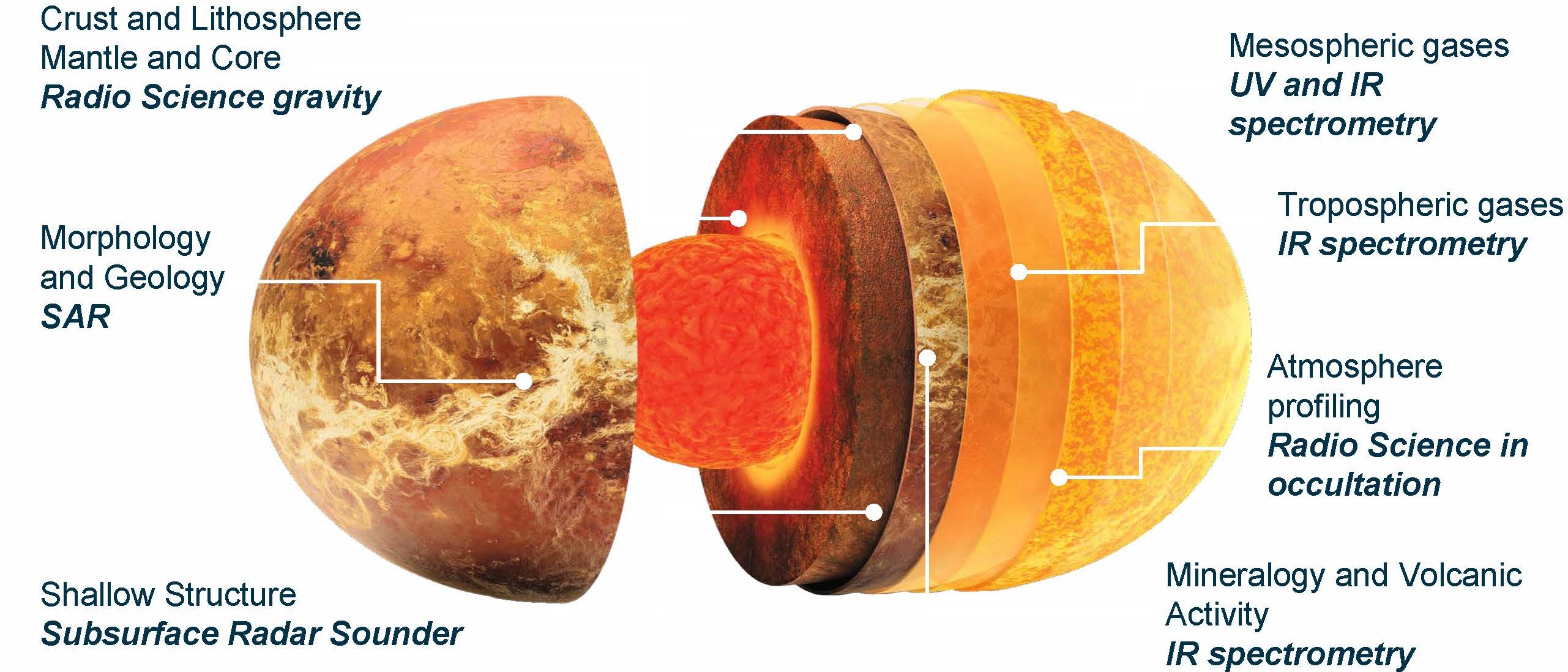Science motivation - EnVision
EnVision Scientific Goals
Venus is the most Earth-like of the Sun’s terrestrial planets in terms of its size, composition and distance from the Sun. Yet at some point in planetary history, the two started to evolve very differently. Venus today is far too hot to host liquid water at its surface, but it may have had a more Earth-like climate for billions of years before developing a runaway greenhouse effect. Hence, Venus provides a natural laboratory for studying how habitability – or the lack of it – evolved in the Solar System.

Credits: ESA/NASA/JPL/VR2Planets.
Hollistic view
EnVision will be the first mission to investigate Venus from its inner core to its upper atmosphere, characterizing the interaction between the different parts of the coupled Venus system, namely it's Atmosphere, Subsurface, Surface and Interior. The EnVision holistic approach allows studying the planet’s History, Activity and Climate.
The scientific questions will be addressed by 5 instruments and an experiment exploiting the platform communication system.
Illustration of the parts of the Venus system addressed by the different EnVision instruments and experiments. VenSAR (Venus Synthetic Aperture Radar, contributed by NASA), SRS (Subsurface Radar Sounder, consortium lead: University of Trento, Italy), VenSpec-M (Venus Spectrometer – Infrared Mapper, consortium lead: DLR, Germany), VenSpec-H (Venus Spectrometer – Infrared High resolution, consortium lead: BIRA, Belgium), VenSpec-U (Venus Spectrometer – Ultraviolet, consortium lead: LATMOS, France), RSE (Radio Science Experiment, consortium lead: Nantes University, France). Image Copyright: National Geographic.
Key scientific questions
The EnVision mission will address a number of key questions about our neighbour:
- How have the surface and interior of Venus evolved?
- How geologically and tectonically active is Venus today, and how active has it been over the past billion years?
- How are Venus’ atmosphere and climate shaped by geological processes?
- Did Venus have oceans – and could evidence of past water remain in the oldest rocks found on Venus’ surface?
- How does Venus lose heat, and when and why did potentially a runaway greenhouse effect begin at the planet?
Further detailes about the EnVision scientific objectives and and how they will be addressed can be found in the ESA report for the mission selection (EnVision Red Book).

Artist impression of a volcanic eruption on Venus. Credits: ESA/AOES Medialab.
- Removed a total of (3) style text-align:center;








































 Sign in
Sign in
 Science & Technology
Science & Technology